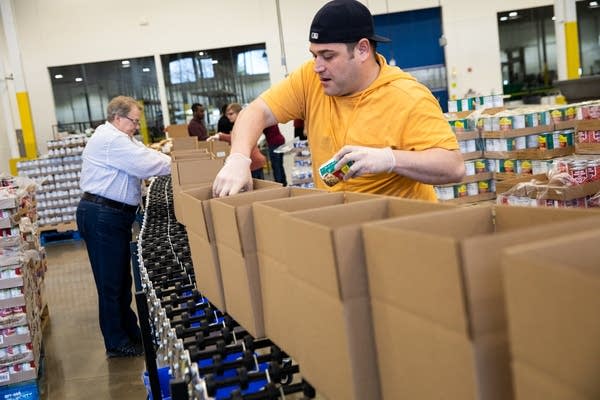Combating food insecurity during the pandemic

Anthony Wright, right, and Valerie Kuhlman, left, pack emergency meal kits during a volunteer shift and Second Harvest Heartland in Brooklyn Park, Minn., on Wednesday, April 1, 2020.
Evan Frost | MPR News
Go Deeper.
Create an account or log in to save stories.
Like this?
Thanks for liking this story! We have added it to a list of your favorite stories.


